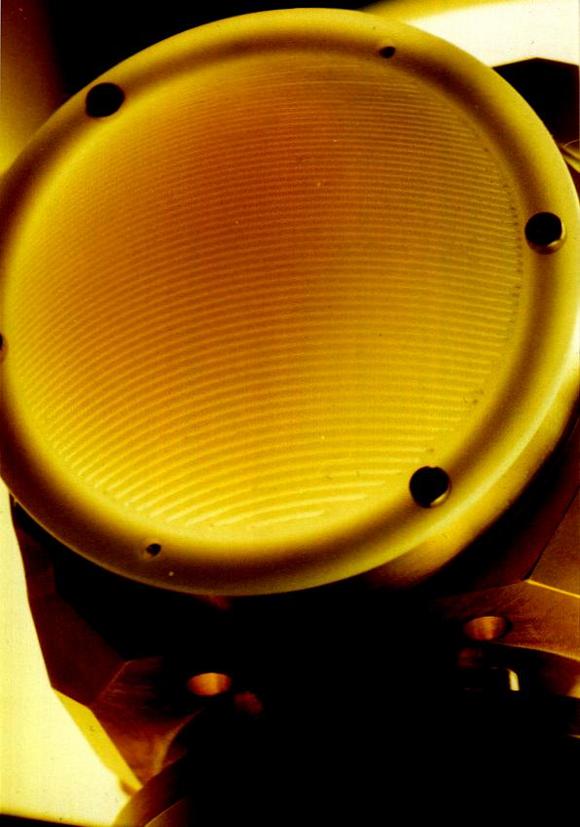This is one of two lenses used in the 119GHz optical system. It is
made from teflon, and has grooves cut into it to reduce undesirable
reflections. A matching layer on a refracting surface is normally
made from a material which has an index of refraction exactly the
square root of that of the lens material. The matching layer can be
simulated by cutting grooves into the lens, as was done here. For
simplicity of fabrication, it would be easier to use grooves that are
concentric circles, but this gives less than optimum performance for
radiation that has a polarisation angle which is not aligned, or not
orthogonal to the matching grooves. In order to avoid loss from
misaligned grooves, the lenses for Odin were cut with linear grooves.
A Computer Numerically Controlled milling machine was programmed to
follow the surface of the lens and cut straight grooves.


